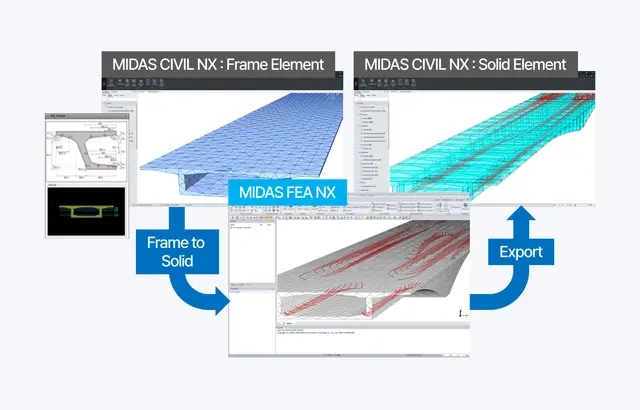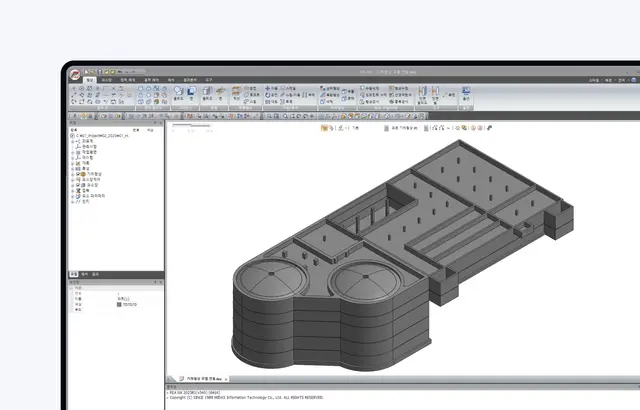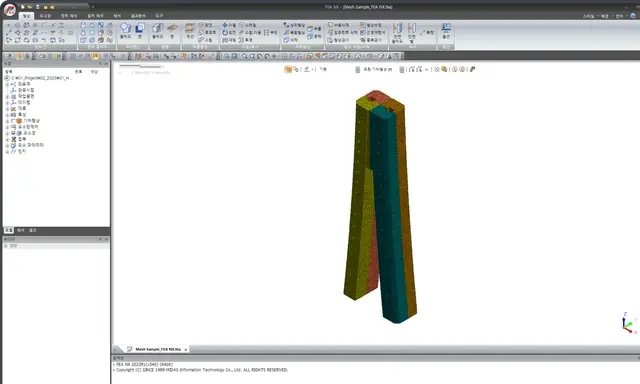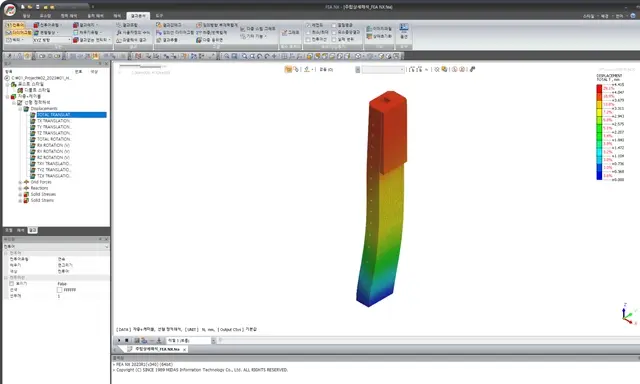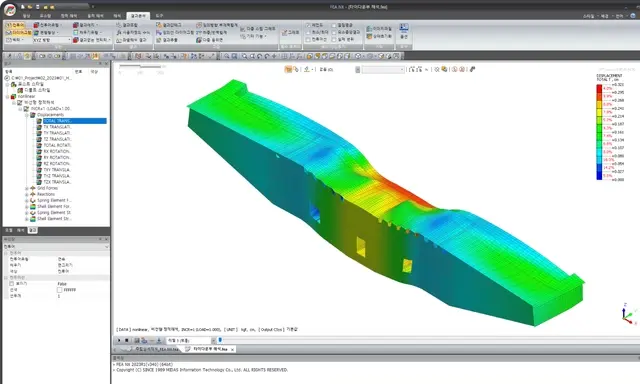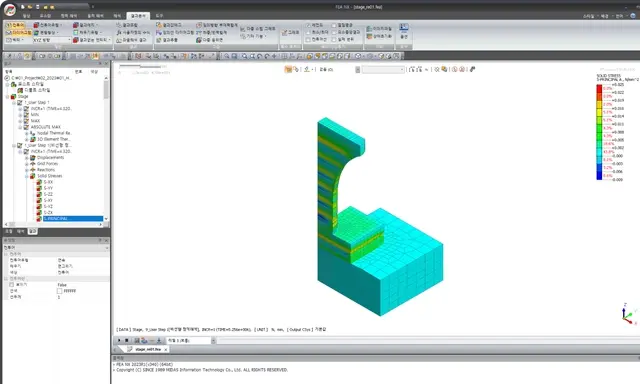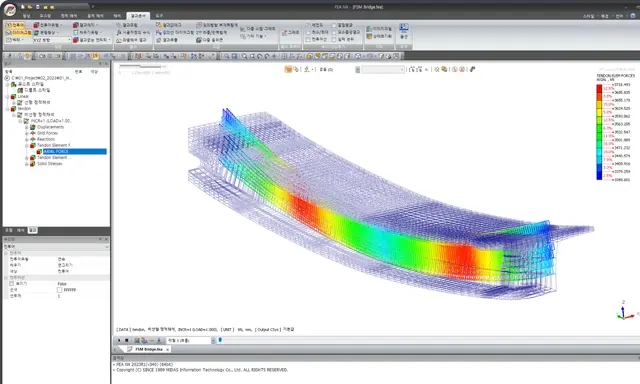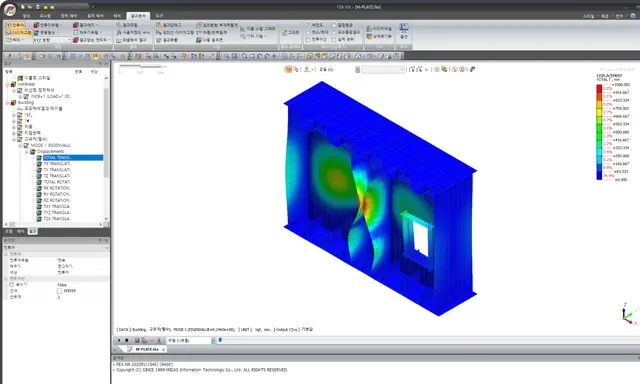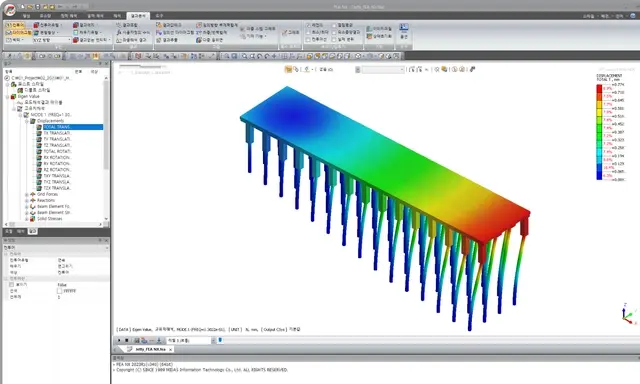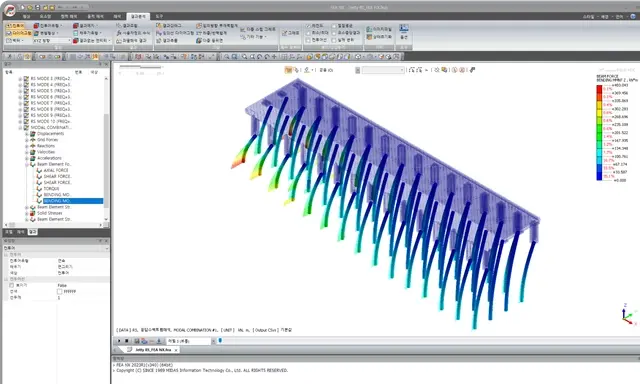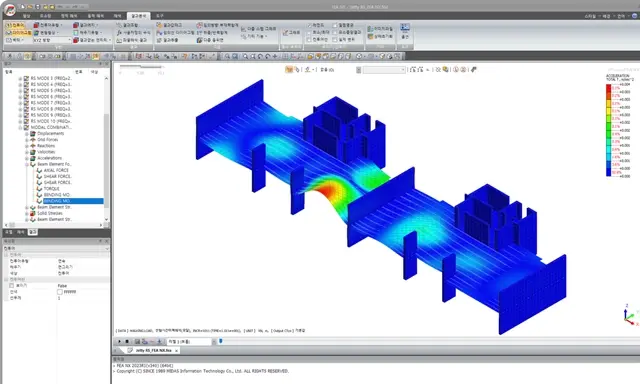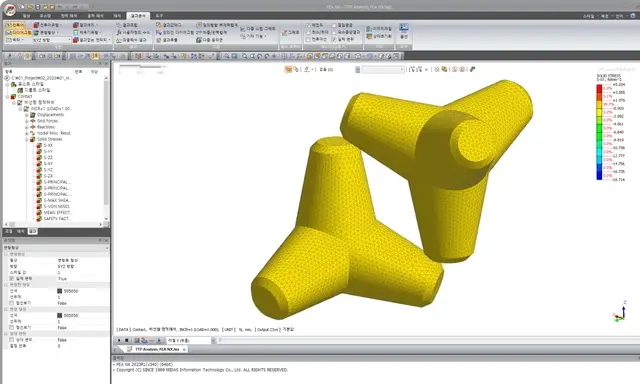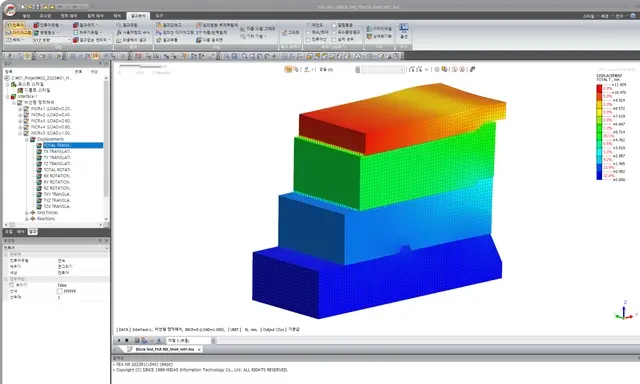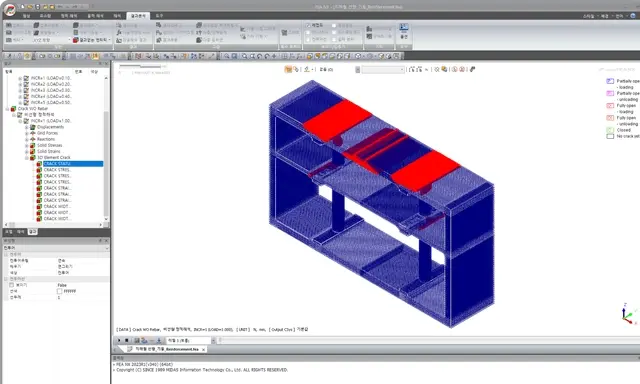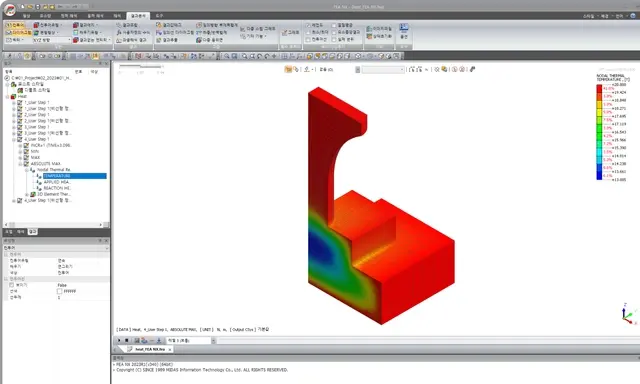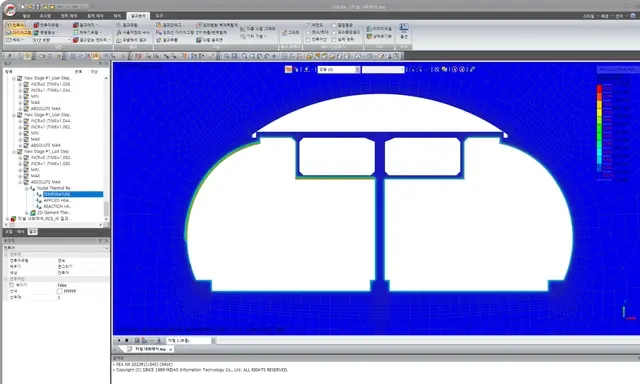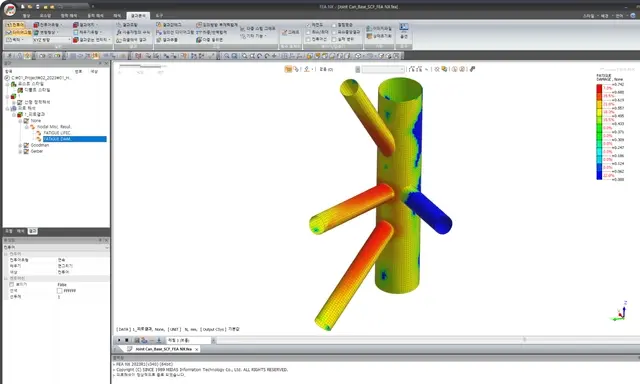MIDAS FEA NX
Here you can edit the background of the section
MIDAS FEA NX
Main Features
Discover the main features of MIDAS FEA NX.
Explore the content and product demonstration videos.
Outstanding Automatic Mesh Generation
Faster Generation of High-Quality Mesh
MIDAS FEA NX, based on 64-bit high-performance computing technology, applies a new framework that utilizes parallel processing based on MultiCore, EM64T, GPU, and co-processor, allowing the generation of meshes regardless of the number of elements, significantly reducing generation time. In addition, while triangular and quadrilateral elements are sufficient to create high-quality meshes for standardized and simple models, real-world structures often have complex and non-standard shapes. Therefore, the creation of hybrid meshes using both triangular and quadrilateral elements is necessary. FEA NX allows the creation of hybrid meshes using hexahedral, pyramid, tetrahedral, and prism elements, enabling the generation of high-quality meshes for models of any shape.Various Advanced Analyses
Linear Static Analysis
Linear static analysis is the fundamental analysis, evaluating the deformation and strength stability of structures under the action of external loads according to Hooke's law. It serves as the basis for all structural safety assessments. FEA NX provides the necessary material properties, loads, boundary conditions, and more for performing linear static analysis.Material/Geometric Nonlinear Analysis
Linear elastic theory cannot be used to assess the deformation beyond the material's yield point and the ultimate load at failure. Therefore, nonlinear analysis that considers material nonlinearity is essential to evaluate structural behavior under extreme conditions. FEA NX can implement various nonlinear material properties for concrete and steel and perform detailed nonlinear analysis considering both material and geometric nonlinearity simultaneously.Construction Stage Analysis
Concrete materials exhibit time-dependent strength development, and the loads applied during construction vary. Therefore, construction stage analysis that considers the time-dependent properties of concrete is necessary. FEA NX offers construction stage analysis, allowing simulation of multiple construction stages to find the optimal sequence that minimizes stress development and ensures stability while reducing construction costs.Reinforcement/Tendon Analysis
Reinforcement and post-tensioned tendons, commonly used in economic structural designs, are challenging to model in finite element analysis. Analyzing structures with these components often requires a significant amount of time. FEA NX simplifies the modeling of reinforcement and tendons as embedded components, enabling immediate and long-term loss assessments, including friction, anchorage, relaxation, and creep/shrinkage effects.Buckling Analysis
Buckling analysis evaluates the critical load at which a structure becomes unstable under compressive forces, helping determine deformation patterns and deformation shapes. FEA NX provides buckling analysis capabilities, making it easier to perform detailed designs of compressed structural components like columns, beams, and struts.Eigenvalue Analysis
Eigenvalue analysis is crucial for understanding a structure's dynamic properties. It allows you to determine natural frequencies, mode shapes, and modal participation factors, which are essential for dynamic response analysis. FEA NX provides eigenvalue analysis capabilities, allowing you to examine vibration modes for structures and evaluate multiple mode shapes, including the fundamental mode.Response Spectrum Analysis
Response spectrum analysis is a seismic design technique used to determine the maximum response of a structure to ground motion. FEA NX provides various response spectrum options based on international design codes, allowing for seismic analysis of structures according to specific requirements.-
- IBC2000 (ASCE7-98): United States, International Building Code 2000
- UBC (1997): United States, Uniform Building Code 1997
- EURO (2004H-ELASTIC): Europe, Seismic Design Provisions for Structures
- Korea (Bridge): South Korea, Road Bridge Design Standards
- Japan (Bridge02): Japan, Building Load Specifications and Dynamic Analysis
- China (JTJ004-89): China, Seismic Design Specification for Highway Engineering
- KBC 2009: South Korea, Building Structural Design Standards (2009), KBC 2005: South Korea, Building Structural Design Standards (2005)
